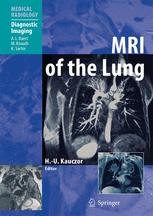

Most ebook files are in PDF format, so you can easily read them using various software such as Foxit Reader or directly on the Google Chrome browser.
Some ebook files are released by publishers in other formats such as .awz, .mobi, .epub, .fb2, etc. You may need to install specific software to read these formats on mobile/PC, such as Calibre.
Please read the tutorial at this link: https://ebookbell.com/faq
We offer FREE conversion to the popular formats you request; however, this may take some time. Therefore, right after payment, please email us, and we will try to provide the service as quickly as possible.
For some exceptional file formats or broken links (if any), please refrain from opening any disputes. Instead, email us first, and we will try to assist within a maximum of 6 hours.
EbookBell Team

4.3
68 reviewsFor a long time, only chest X-ray and CT were used to image lung structure, while nuclear medicine was employed to assess lung function. During the past decade significant developments have been achieved in the field of magnetic resonance imaging (MRI), enabling MRI to enter the clinical arena of chest imaging. Standard protocols can now be implemented on up-to-date scanners, allowing MRI to be used as a first-line imaging modality for various lung diseases, including cystic fibrosis, pulmonary hypertension and even lung cancer. The diagnostic benefits stem from the ability of MRI to visualize changes in lung structure while simultaneously imaging different aspects of lung function, such as perfusion, respiratory motion, ventilation and gas exchange. On this basis, novel quantitative surrogates for lung function can be obtained.
This book provides a comprehensive overview of how to use MRI for imaging of lung disease. Special emphasis is placed on benign diseases requiring regular monitoring, given that it is patients with these diseases who derive the greatest benefit from the avoidance of ionizing radiation.